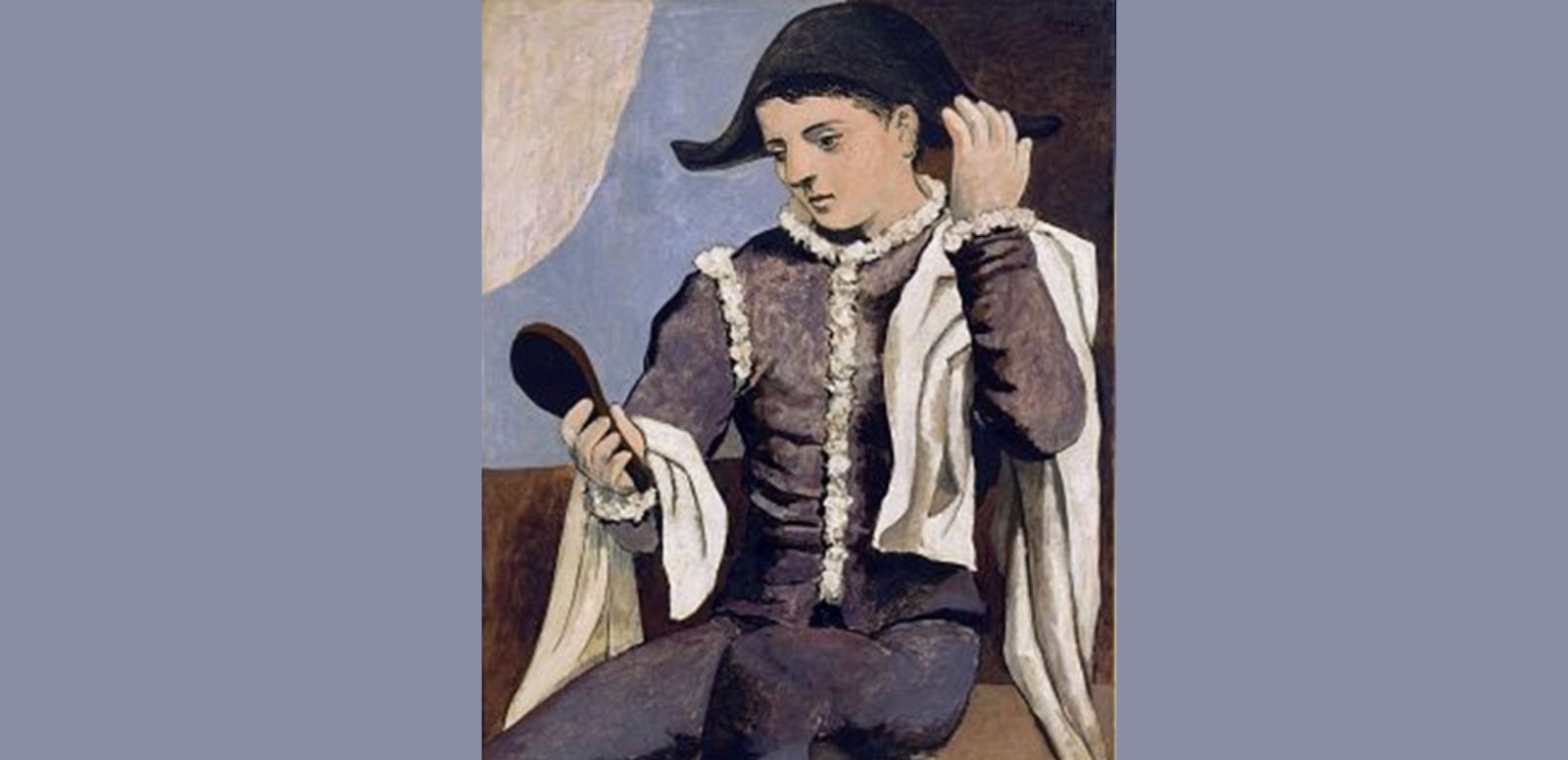
Museo Nacional Thyssen-Bornemisza, Madrid
© Sucesión Picasso, VEGAP, Madrid, 2023
Pablo Picasso brought his work Harlequin with Mirror to life in the fall of 1923, a canvas that captures not only his talent, but also his state of mind and artistic evolution. At 42 years old at the time, Picasso had already established himself as a prominent and valued artist worldwide. However, he was going through a period of melancholy that was reflected in his work, marked by a creative shift. Artistically, he was in a moment of a particular classicism filtered by cubism.
This painting fuses characters from the world of the circus and the Commedia dell'arte to which Picasso was attracted. Specifically, we can see the characteristic two-pointed hat of the Harlequin, commonly known as the bicorn, the typically acrobatic mauve-colored costume and the inexpressive features of Pierrot that turn the character's face into a mask.
The central character, the imposing Harlequin, is represented in a close-up perspective that allows a detailed appreciation. The mirror in which he is observed refers to reflection and introspection. All these elements and symbols converge towards a representation that transcends the simple visual and expresses the complexity that the artist has seen in his inner life.
The influence of classical antiquity following Picasso's trip to Italy in 1917, which addressed the Naples Archaeological Museum exhibition in Picasso and the Ancient World is visible in the expressive brushstrokes. While this trip marked a return to more traditional approaches, his interpretation was not a mere imitation, but the result of the artistic freedom acquired in his previous Cubist phase. The painting shows a contradiction between the classicism of the drawing and the expressive use of color.
Harlequin with a Mirror (1923) is part of the exhibition Picasso. The Sacred and the Profane, a proposal of the Museo Nacional Thyssen-Bornemisza as part of the Picasso Celebration 1973-2023. In the exhibition, Picasso's works dialogue with paintings by El Greco, Rubens, Zurbarán, Van der Hamen, Delacroix, a sculpture by Pedro de Mena or engravings by Goya. In this case, the Harlequin is placed next to the magnificent Portrait of a Young Man as Sebastian by Bronzino, pointing out that classical tradition in which the refined Florentine mannerism of the 16th century is also inserted.
Sources:
Museo Nacional Thyssen-Bornemisza:
https://www.museothyssen.org/coleccion/artistas/picasso-pablo/arlequin-espejo
EducaThyssen:
RTVE Audio:
https://www.rtve.es/play/audios/los-cuadros-de-pablo/capitulo-1-arlequin-espejo/6848010/

